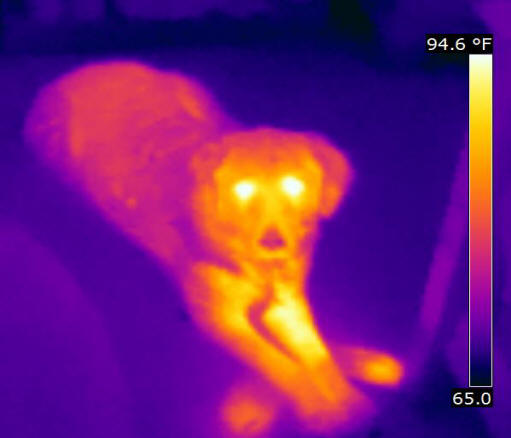Veterinarians across the world are now starting to use thermal imaging cameras – but how can they be used to help animals?

To understand the theory behind using thermal imaging cameras inside a medical environment you firstly need to get a grasp of how a thermal camera works.
The device basically allows the user to see the world in a different manner – thermal cameras do not operate with visible light and instead detect infrared radiation, which is invisible to human eyes. This, in short, allows the human user of the thermal camera to see the environment as a thermal image, complete with hot and cold spots.
When used in a medical environment, the infrared radiation given off by animals (and humans as well) can vary dramatically depending on various factors such as physical exertion, the temperature of the area and the person’s/animals body heat. The amount of radiation given off by a body can also allow trained surveyors to see exactly where in a body may be giving off too much or too little heat, allowing them to diagnose several problems without carrying out surgery.
This process basically means the amount of stress a vet has to put on an animal to see what the problem is is completely minimised, as thermal imaging cameras can be used without even touching the body of an animal.
In short, the use of thermal imaging cameras allows vets to see:
- Problems with joints and the skeleton - inflammations and abrasions under the skin usually heighten the body heat, allowing vets to see the problem clearly
- Tissue damage
- Muscle tears, bruises and strains
- Problems with circulation mean the body isn’t being heated correctly
- Nerve damage

